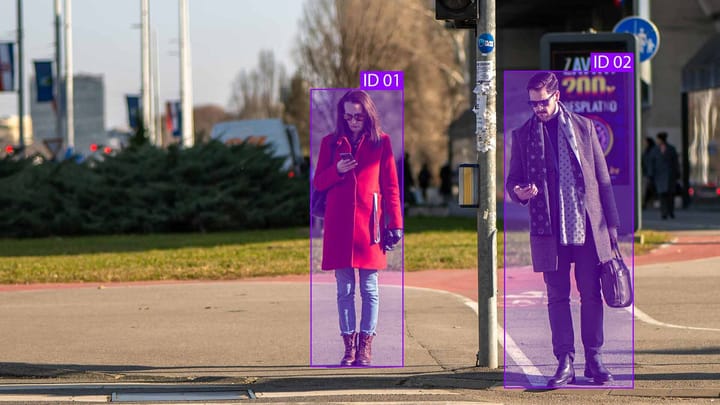Personalizing Retail Experiences with AI Models

An astonishing 80% of consumers are more likely to buy when brands offer personalized experiences. This fact isn't just a trend. It's urging retailers to use AI in retail personalization. AI in retail isn't about just keeping up. It's about changing how we shop, making every step focused on the customer.
AI can handle vast amounts of customer data daily. It's reshaping retail into a place that feels friendly and made just for you. AI improves how stores manage inventory, create shopper profiles, and follow up after you buy. It connects all points of shopping into a smooth journey of data and personal touches.
Key Takeaways
- AI-driven personalized retail boosts sales chances and builds loyalty.
- Using AI for personal touches can greatly increase sales and cut costs.
- AI models focused on customers can majorly improve satisfaction, conversions, and teamwork.
- Focusing on loyal customers with personalization gives much better returns than general ads.
- Sephora's smart use of a personalized loyalty program shows how effective AI can be in retail.
The Growing Imperative for Personalization in Retail
In today's market, making shopping personal is a must. It's what shoppers expect. They want to feel seen and understood when they shop. This change is a big deal. It's all about meeting shoppers' needs for a unique experience.
The Shift in Consumer Expectations
Now, personalized shopping is key to making customers happy. Shoppers have lots of choices these days. They want shopping that matches their likes and habits. Retailers use data to make shopping feel special for each person, setting them apart from typical stores.
Statistics Highlighting the Demand for Personalized Shopping
Here are some stats that show how important personalization is:
- 80% of shoppers are more likely to buy if the experience is personalized.
- Retail leaders focusing on customers have three times higher returns than others.
- Personalization can increase sales by 10 to 15%.
Understanding the Personalization Spectrum
Personalization can take many forms. Brands like Sephora and Nike are leading with great personalization ideas. Sephora uses its loyalty program to give personalized offers. Nike lets customers design their own sneakers. Both improve the shopping experience.
Predictive analytics help guess what shoppers will want next. This lets retailers give customers what they desire before they even ask. It's about engaging customers in a proactive way.
| Feature | Impact on Revenue | Impact on Customer Loyalty |
|---|---|---|
| AI-Driven Personalization | 69% increase | Enhances loyalty and wallet share |
| Real-Time Customization | 10-15% higher conversion rates | Lifts satisfaction rates by 20% |
| Targeted Promotions | 1-2% lift in sales; higher in non-grocery sectors | Three times the return compared to mass promotions |
Leaders in this field don't just use tools for personalization. They strategically use data to improve how we interact with brands. Every contact becomes a chance for a personal touch.
Defining AI Model in Retail Personalization
Imagine a world where each store knows exactly what you like. That's what AI in retail personalization aims for. Using advanced AI, shops can give a smooth shopping journey. This journey goes across in-store, online, and on mobile apps.
AI models use customer and product intelligence to make shopping personal. They look at your shopping history and what you like online. Then, AI suggests products just for you. This makes shoppers happier and helps stores sell more through smart suggestions.
Omnichannel personalization ensures your shopping experience is consistent. Whether you're online, on your phone, or in a store, it feels the same. This method keeps the brand's image and your experience special, no matter how you shop.
Here are important facts about AI model in retail personalization:
- 54% of retail marketers are growing their businesses using AI for personalization across different channels.
- Machine learning, vital to AI in retail, helps platforms like Adobe Target offer wide-scale personalization for years.
- Companies like Amazon are changing retail with AI stores like Amazon Go. These stores offer a smooth and very personal shopping experience.
To start personalizing, retailers must first know their goals. Then, they need the right technology investment. Working with tech experts in AI and machine learning is key. Watching how things go and taking feedback keeps personalization up to date and useful.
In the end, choosing an AI model in retail personalization lets brands do more than sell. They create special shopping experiences. This builds lasting loyalty and happiness amongst customers.
AI's Role in Crafting Customized Shopping Journeys
In today's fast-changing retail world, AI-driven personalization makes shopping more tailored and fun. AI uses lots of data to give real-time optimization and product recommendations. This makes shopping better for everyone.
Tracking and Analyzing Customer Data
AI is great at watching and learning from what customers do online. It looks at browsing and buying to understand consumers. This helps make shopping experiences that really fit what each person wants and does. Learn more about tailored shopping experiences in ecommerce.
Leveraging Behavioral and Transactional Insights
AI checks things like which pages you look at and how long you look. So, AI gives product recommendations that match what you like and need. Real-time optimization changes suggestions to make sure they are always right.
AI also uses what it knows about sales to predict trends and manage stock. This makes sure stores don't run out of things or have too much.
Using AI not only makes shopping more personal but also betters other retail areas. Stores see more sales and bigger purchases, all thanks to AI. But, they need to make sure they respect your privacy while giving you a personal experience.
Looking ahead, AI's role in retail will get even bigger. With new things like IoT and augmented reality, shopping will become even more personal and exciting, no matter where you are.
Decoding the Difference: Personalization vs. Segmentation
The retail world is changing fast with tech that uses customer data analysis. This improves how we shop. Segmentation puts customers into big groups. 1:1 personalization however, creates special interactions for each person. It uses advanced dynamic personalization ways.
Segmentation sorts people by things they have in common. Personalization digs deeper. It looks at past actions to guess what someone will need next. This makes customers happier and helps businesses grow through tailor-made connections.
Dynamic personalization uses smart algorithms. These change content, offers, and products right then and there. This makes every interaction relevant and interesting. Segmentation, however, often misses how a person's tastes change over time. This can make old marketing tactics less effective.
| Feature | Segmentation | 1:1 Personalization |
|---|---|---|
| Approach | Grouping based on demographics, behaviors | Individualized interactions based on real-time data |
| Technology Use | Basic data collection, simple analytics | Advanced AI, real-time data processing |
| Customer Engagement | Generic, broader appeal | Highly targeted, relevant |
| Business Impact | Moderate improvement in efficiency | Significant increase in conversions, retention |
| Example | General email campaigns | Customized product recommendations |
To really use new marketing tech well, companies need to move from just segmentation to strong 1:1 personalization. This means better tech and a deep look into customer data analysis. Doing this makes every customer feel special and seen. Putting money into dynamic personalization methods is key. It's how to give the best customer service and build true loyalty to your brand.
The Mechanics of Machine Learning in Predictive Analytics
In the retail world, focusing on the customer has become key. Machine learning and predictive analytics play a big role in this change. They look through huge amounts of data to find trends. This helps companies decide everything from what to stock to how to market to people.
The Importance of Data Quality in Personalization
To make AI personalization work well, high-quality data is a must. Good data lets algorithms make accurate predictions for personalized shopping. Thus, the better the data, the better machine learning can improve the shopping experience.
Algorithms Behind Personalized Product Recommendations
Personalized marketing uses several smart algorithms. These include Collaborative Filtering, Content-Based Filtering, and Hybrid Recommendation Systems. They look at past buys and web visits to suggest products that a customer might like.
| Technology | Application in Retail | Impact on Personalization |
|---|---|---|
| Machine Learning Algorithms | Predictive analytics for inventory and pricing | Custom-tailored pricing strategies |
| Computer Vision | Facial recognition for personalized services | Enhanced in-store customer experiences |
| AI-Enabled Cameras | Monitoring customer behavior and traffic | Optimized product placements and marketing |
Real-Time Optimization with AI: A Retail Game-Changer
AI-powered solutions are changing retail by making businesses interact better with customers. It's all about real-time optimization, which makes shopping experiences better and more efficient.
Think about walking into a store that changes based on what you like and what's trending. This is done thanks to AI. It uses different data sources to improve the shopping space instantly. This not only makes shopping more fun but also drives sales because it speaks directly to what customers want.
Smart inventory systems are another great example. They watch stock levels and predict what will be needed next. This way, the best-selling items are always available, and there's less waste. It saves money and keeps items that people want always ready.
AI also makes customer service better. With AI chatbots and tools, shopping advice and problem-solving are much faster. This makes customers happier and more likely to come back.
When it comes to understanding shopping patterns, AI and data analytics are key. They help retailers make smart choices fast. AI helps in creating offers just for you, setting the right prices, and recommending products you'll love.
The use of AI in retail is transforming the scene. It's not just about easier operations; it brings shopping that truly fits each customer. AI helps save costs and increase sales with offers made just for you. Truly, AI is essential in modern retail.
Conversational AI Assistants: Enhancing Customer Support
In today's world, conversational AI assistants change how businesses talk to customers. Using Natural Language Processing (NLP), they offer enhanced customer support. They understand and process language like humans, providing smart responses instantly.
Technologies That Transform Customer Interactions
Conversational AI uses advanced NLP to understand customer queries and give the right responses. This improves customer experience and boosts efficiency by automating simple tasks. Human agents can then handle complex issues. Adding AI across communication channels makes support seamless, always on, and quick.
Case Studies of Conversational AI in Action
Many top companies are using conversational AI to improve customer engagement and efficiency. Sephora offers personalized beauty advice through chatbots. Domino's uses them for order handling and customer support. Bank of America's Erica provides financial help, sending proactive alerts and advice.
| Company | AI Application | Impact |
|---|---|---|
| Sephora | Personalized Beauty Recommendations | Enhanced shopping experience |
| Domino's Pizza | Order Processing and Customer Support | Reduced wait times |
| Bank of America | Financial Management (Erica) | Improved financial interactions |
| Prada Group | Enhancement of Digital Sales Experiences | Increased customer interaction on social platforms |
The power of conversational AI assistants in enhanced customer support is clear. By using Natural Language Processing, businesses offer personalized, real-time service. This not only pleases customers but also makes operations more efficient.
Omnichannel Personalization: Bridging the Online-Offline Divide
In today's market, omnichannel personalization is essential. It creates a seamless service for shoppers both online and offline. Modern consumers expect a smooth and uniform shopping journey.
Customers look for both consistency and tailored recommendations. Whether they're online or in a physical store, they want recommendations that match their tastes. AI and machine learning help a lot here. They analyze consumer data to offer personalized suggestions and prices.
| Feature | Benefit |
|---|---|
| Unified Customer Profile | Ensures every interaction with the brand is informed by a complete understanding of the customer's preferences and history. |
| Real-Time Inventory Visibility | Allows customers to view product availability seamlessly across all channels, enhancing the convenience of services like BOPIS (buy online, pick up in-store). |
| Integrated Customer Service | Delivers a cohesive service experience, whether the customer engages online, via mobile, or in person. |
| Seamless Transition | Enables a smooth shift for customers moving from online browsing to in-store purchasing, maintaining continuity in shopping experience and personalization. |
Brands like Walmart and Alibaba's Freshippo show the power of an omnichannel approach. Walmart linked its online and traditional stores to boost satisfaction and sales. Freshippo merged online and offline shopping, raising the bar for grocery retail.
To ace omnichannel personalization, brands need the latest tech. IoT for tracking, cloud computing for data sharing, and AI for tailored recommendations are key. This boosts customer involvement and brand loyalty, lifting sales.
The goal is to make shopping easy, personal, and fun across all platforms. Every customer experience should be unique, showcasing the real value of omnichannel personalization.
Dynamic Pricing Strategies Powered by AI
Today's retail world is highly competitive. Using AI-driven retail analytics for dynamic pricing strategies is essential. Sophisticated price optimization algorithms help retailers adjust prices on the fly. This improves competitiveness and profit, and also customer happiness.
Algorithmic Approaches to Price Optimization
AI technology is key for price optimization in retail. It studies market conditions, competitor prices, customer actions, and how much stuff is on hand. These algorithms change prices as needed to keep revenues high and stay adaptable.
Machine learning lets these systems handle complicated data easily. They look at up to sixty factors, including timing and location-specific issues. This helps set prices that are competitive but also make money.
Impact on Sales and Customer Perceptions
AI-driven dynamic pricing changes how much things cost based on demand and supply. This boosts sales. Retailers notice customers think they're getting better value, especially when prices of important items are smartly adjusted.
Dynamic pricing can raise profits by 5% to 10%. Some, like Amazon, see profits jump by 25% because they adjust millions of prices every day.
| Strategy | Impact on Profits | Impact on Customer Perception |
|---|---|---|
| Real-time Pricing Adjustments | Increases competitiveness, maximizes profit margins | Enhances customer satisfaction by offering competitive prices |
| Geoanalytic Pricing | Optimizes prices at local store levels | Improves customer willingness to pay, enhancing local market penetration |
| Responsive Repricing (e.g., Amazon) | Estimated 25% increase in profits | Maintains high competitive edge, high customer retention |
AI systems not only make managing inventory better but also make customers happier by offering fair prices adjusted to their needs and the market.
Integrating AI into Retail for Enhanced Inventory Management
Today's retail world is changing fast, with consumer demands at the forefront. AI-powered inventory management systems are vital for keeping up. They use predictive inventory analytics to make sure stock levels meet customer needs perfectly.
Predictive Inventory Analytics
How businesses manage inventory is changing thanks to predictive inventory analytics. These systems look at past sales, seasonal trends, and more to predict what will sell. This helps avoid too much or too little stock and makes retail operations smoother.
Case Examples of AI-driven Stock Management
Walmart and Amazon are leading the way in AI inventory management. Walmart uses AI robots for tracking inventory in real-time, helping to reduce surplus. Meanwhile, Amazon uses predictive analytics to adjust stock levels, cutting costs and ensuring products are available.
Startups in retail are also turning to AI to better manage inventory. They use predictive analytics to quickly adjust to changes in product demand. This helps cut down on waste and keep stock levels right.
| Retailer | AI Strategy | Impact on Inventory Efficiency |
|---|---|---|
| Walmart | AI-driven robots for stock management | Reduction in surplus stock and enhanced tracking |
| Amazon | Predictive analytics for demand forecasting | Optimized stock levels, reduced operational costs |
| Nourish + Bloom | AI in autonomous store settings | Seamless inventory synchronization, minimal shrinkage |
Using AI in inventory management helps businesses flow better and meet market demands. The insights from AI are critical in our fast-moving market. They make sure your retail operations are both effective and quick to respond.
Summary
As we enter a new phase in retail, the role of AI model in retail personalization becomes crucial. It's not just a trend. It's the future of shopping. AI can understand huge datasets, allowing stores to meet your needs precisely. Personalized shopping is the ultimate goal. With AI, shops can create experiences that meet and predict your desires. This builds a strong connection with brands.
Retailers are now using predictive analytics to reshape the industry. There's been a 24% increase in AI use in retail over the past 3 years. Stores see AI as necessary for success. It makes operations more efficient, reduces risk, and cuts costs. It also makes shopping more personal and smart. Thanks to AI, your shopping experience now fits you perfectly.
As we explore this new territory, we must think about the ethics of AI. It's important to be open about how data and AI decisions are used. Looking forward, using AI to focus on customers is our next step. AI and retail personalization are here to stay. They promise a future where shopping feels personal and builds true loyalty.
FAQ
What is AI model in retail personalization?
An AI model in retail personalization uses machine learning to customize shopping for everyone. It studies customer actions and likes to offer tailor-made suggestions and content. This happens at different points in the shopping process.
How does AI-powered retail enhance customer-centric experiences?
AI-powered retail improves shopping by understanding what customers like and need. It offers personalized marketing and product ideas instantly. This leads to happier customers who engage more with the brand.
Why is personalization in retail considered a growing imperative?
Retail personalization matters more now because customers expect it. When stores make shopping experiences personal, customers stick around more and buy more.
How have consumer expectations shifted regarding personalized shopping?
Now, customers don't just like personalization; they demand it. They want stores to know their unique tastes and histories. And they seek shopping experiences that match their exact needs.
Can you provide statistics that highlight the demand for personalized shopping?
Studies show many shoppers get upset by generic shopping experiences. Personalized marketing boosts customer loyalty and acquisition. Shoppers share their data for better personalization and might spend more at stores that do this well.
What is the difference between personalization and segmentation in retail?
Personalization caters to the individual shopper, making their experience unique. Segmentation divides customers into groups by common traits. While personalization focuses on one, segmentation aims at groups.
How do algorithms assist in providing personalized product recommendations?
Algorithms use customer data like previous buys and browsing to find patterns. They predict what products a customer might like. These predictions get better as the system learns over time.
What is real-time optimization in the context of AI in retail?
Real-time optimization means AI systems update instantly using the latest data. They make each customer's visit more relevant and personalized. The goal is better shopping experiences and more sales.
How do conversational AI assistants enhance customer support?
Conversational AI helps by providing instant, personalized help. They understand and answer questions using natural language. They offer product suggestions and help with buying, all in a conversational way.
What is the role of dynamic pricing in AI-powered retail personalization?
Dynamic pricing changes prices based on current market trends and customer behavior. It helps stores set competitive prices while staying profitable. Customers get fair prices, improving their satisfaction and loyalty.
How does AI enhance inventory management in retail?
AI predicts what products will be popular by analyzing sales, trends, and customer behavior. This helps keep the right amount of stock available. It reduces the chance of running out or having too much stock.



Comments ()